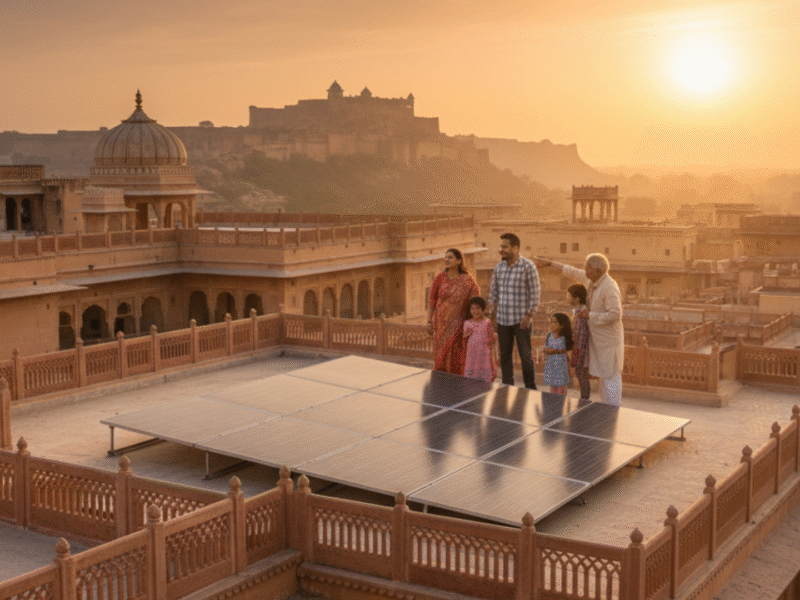
Tired of ever-increasing electricity bills? Worried about your carbon footprint? A rooftop solar system might be the perfect solution for you. Going solar at home is no longer a futuristic concept; it’s a smart, accessible, and increasingly popular choice for homeowners worldwide. This beginner’s guide will walk you through everything you need to know about a rooftop solar system, from understanding the basics to installation and long-term benefits.
Why a Rooftop Solar System is a Smart Investment
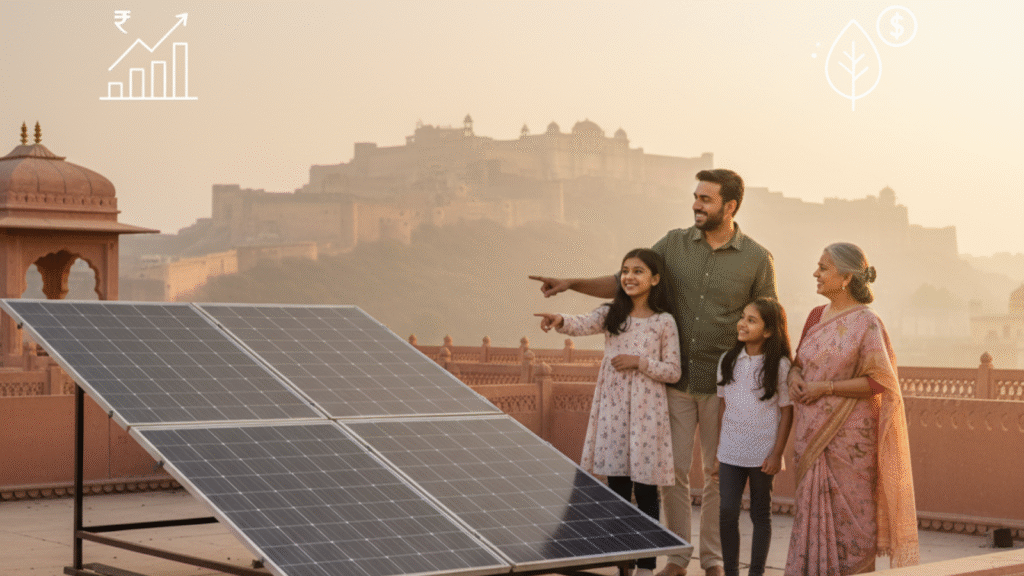
Switching to solar energy offers a multitude of benefits that go beyond just reducing your electricity bill. It’s a long-term investment that pays for itself in multiple ways.
- Significant Cost Savings: The most compelling reason for many is the dramatic reduction in monthly electricity bills. By generating your own power, you become less reliant on the grid and its fluctuating rates. In many cases, you can even sell excess energy back to the grid through a process called net metering, creating a new source of income.
- Increased Property Value: A home equipped with a rooftop solar system is a more attractive asset. Studies have shown that solar installations can significantly increase a property’s resale value and reduce its time on the market.
- Environmental Benefits: Solar power is a clean, renewable energy source. Installing a rooftop solar system directly reduces your home’s carbon footprint, helping you contribute to a healthier planet by decreasing your reliance on fossil fuels.
- Energy Independence: With a rooftop solar system, you gain a degree of independence from the traditional power grid. This can provide a sense of security, especially in areas prone to power outages. Adding a battery backup system can even ensure your lights stay on when the grid goes down.
Low Maintenance and Long Lifespan: Modern solar panels are built to be durable and withstand various weather conditions. They require minimal maintenance, typically just occasional cleaning. With most panels coming with a 25-year warranty, you can expect decades of reliable performance.
Understanding the Components of a Rooftop Solar System
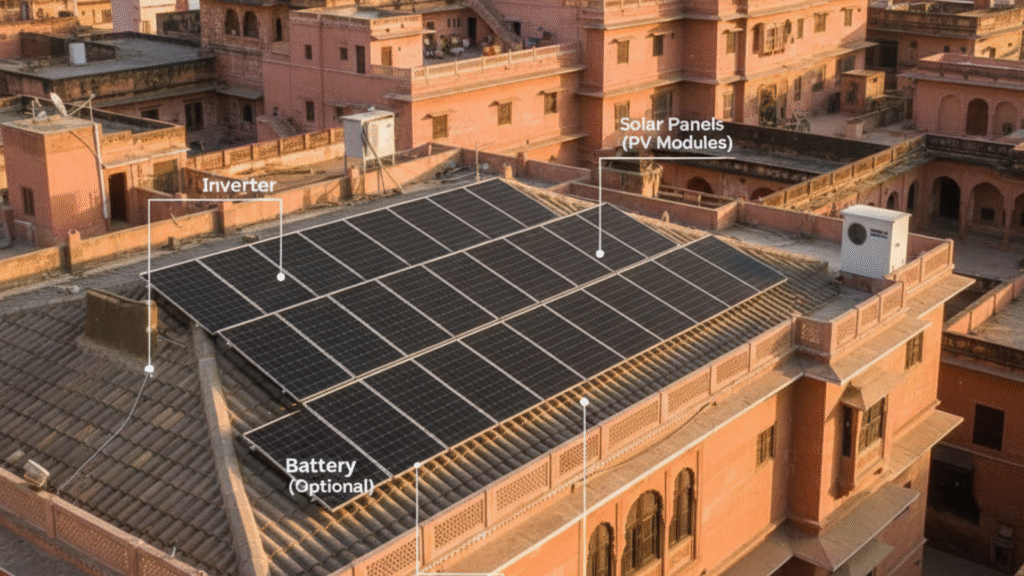
A complete rooftop solar system is more than just the panels. Here are the key components that work together to power your home:
- Solar Panels (PV Modules): These are the most visible part of the system. Made of photovoltaic (PV) cells, they capture sunlight and convert it into direct current (DC) electricity.
- Inverter: This is a crucial device that converts the DC electricity from your solar panels into alternating current (AC) electricity, which is the usable form of power for all your home appliances.
- Mounting Structure: This system secures the solar panels to your roof. It’s designed to be durable and to position the panels for optimal sunlight exposure.
- Battery (Optional): A solar battery stores the excess energy generated by your panels during the day. This stored energy can then be used at night or during cloudy days, further increasing your energy independence.
- Net Meter: This special meter tracks the electricity you consume from the grid and the excess electricity your system sends back to it, allowing for billing based on your net energy consumption.
Types of Rooftop Solar Panels
Choosing the right solar panel is a critical step. The two most common types for residential use are:
- Monocrystalline Solar Panels: Made from a single, high-purity silicon crystal, these panels are known for their high efficiency (18-22%) and sleek black appearance. Because they require less roof space for the same energy output, they are a great choice for smaller roofs. However, they are generally more expensive.
- Polycrystalline Solar Panels: Composed of multiple silicon crystals, these panels are slightly less efficient (15-18%) but are more affordable. In addition, they have a more marbled, bluish appearance. They are a great budget-friendly option, especially if you have ample roof space.
The Installation Process: A Step-by-Step Guide
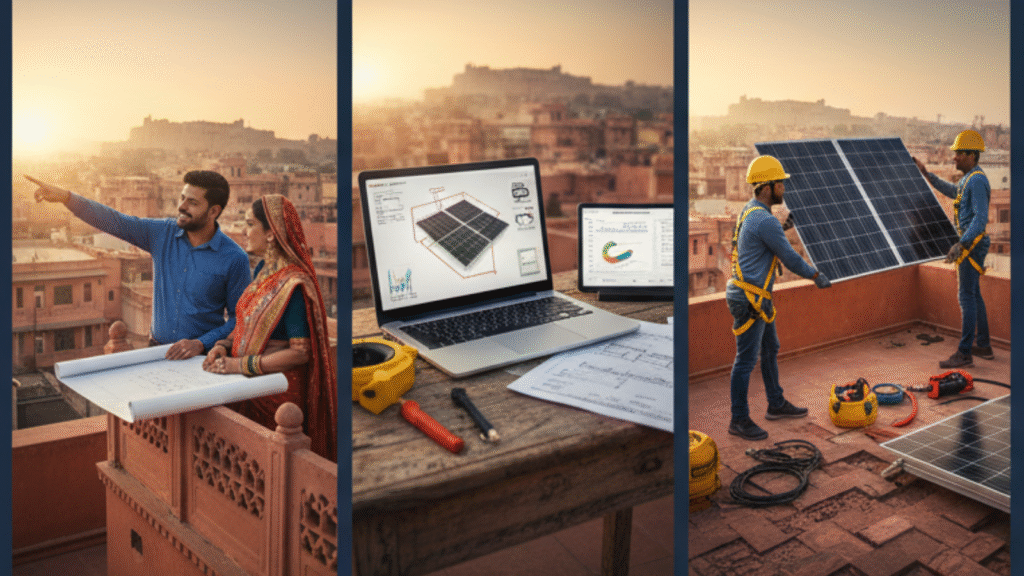
Installing a rooftop solar system is a straightforward process when handled by professionals. Here’s a general overview of the steps:
- Site Assessment and Consultation: A solar professional will evaluate your home’s energy needs, roof condition, and sunlight exposure to design a custom system. Then, they’ll review your electricity bills to determine the ideal system size.
- System Design and Permitting: Once the design is finalized, the installer will handle all necessary permits and approvals from local authorities and your utility company.
- Installation: The physical installation typically takes a few days. This involves mounting the panels, installing the inverter, and connecting the system to your home’s electrical panel.
- Inspection and Commissioning: After installation, a local inspector will verify that the system is installed correctly and safely. As soon as it’s approved, your utility company will install the net meter, and your system can be switched on.
Cost and Financials: Making Solar Affordable
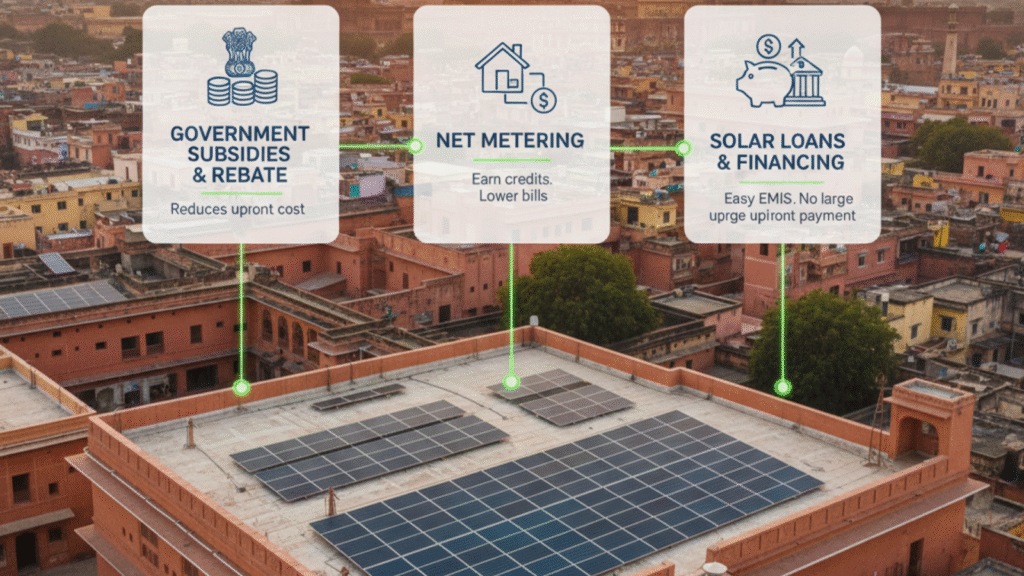
The initial cost of a rooftop solar system can seem high, but it’s important to view it as a long-term investment. The good news is that there are many ways to make it more affordable.
- Government Subsidies and Rebates: Many governments, including the Indian government, offer subsidies to encourage the adoption of solar energy. For example, the PM Surya Ghar Muft Bijli Yojana provides significant financial assistance for residential solar installations in India.
- Net Metering: This policy allows you to get credit for the excess electricity you generate and export to the grid. This can significantly reduce your payback period.
- Solar Loans and Financing: Various banks and financial institutions offer dedicated solar loans with attractive interest rates, making it easier to finance your installation without a large upfront payment.
A Quick Comparison: Key Considerations
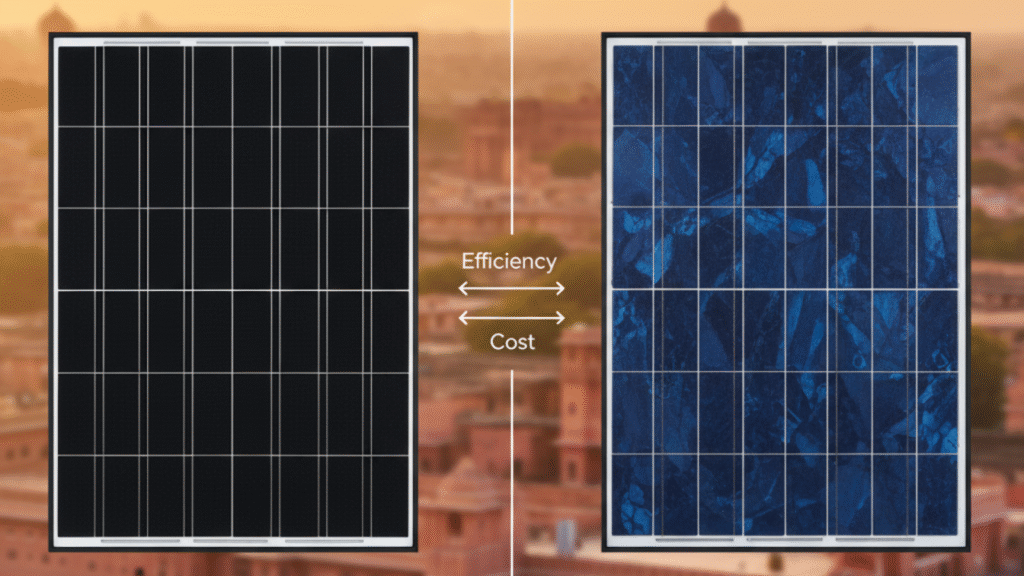
To help you decide, here is a simple table comparing the two main types of panels and a typical system size.
| Feature | Monocrystalline Panels | Polycrystalline Panels |
| Efficiency | High (18-22%) | Moderate (15-18%) |
| Cost | Higher | Lower |
| Appearance | Uniform, Dark Black | Marbled, Blueish |
| Space Required | Less | More |
| Ideal For | Smaller roofs, high efficiency is a priority | Larger roofs, budget-conscious buyers |
Note: The cost of a 3kW rooftop solar system in India typically ranges from ₹1,89,000 to ₹2,15,000, however, this can vary based on location, brand, and government subsidies.
FAQ Section: Your Questions Answered
Q1: How much roof space is required for a 1kW rooftop solar system?
A: On average, a 1kW solar system requires approximately 80-100 sq. ft. of shadow-free rooftop space.
Q2: Will my solar panels work on cloudy or rainy days?
A: Yes, solar panels will still generate some electricity on cloudy or rainy days, but at a reduced efficiency. The system will continue to function, but its output will be lower compared to a sunny day.
Q3: What is the lifespan of a rooftop solar system?
A: The solar panels themselves are very durable and typically come with a performance warranty of 25 years or more. The inverter may need to be replaced after 10-15 years, while batteries (if installed) have a lifespan of 5-15 years depending on the technology.
Q4: Do I still need to be connected to the grid?
A: For most residential rooftop solar system installations, you will remain connected to the grid. This is called a “grid-tied” system and it allows you to draw power from the grid when your solar system isn’t producing enough electricity (e.g., at night) and to send excess power back to the grid.
Q5: How do I get started with installing a rooftop solar system?
A: The best way to begin is by getting a professional consultation. You can contact a reputable solar installation company in your area. They will assess your home, provide a detailed quote, and guide you through the entire process, including securing subsidies and permits.
Going solar is a monumental step toward a more sustainable and financially sound future. With the right information and a reliable installer, a rooftop solar system can be one of the best investments you make for your home and the environment.

